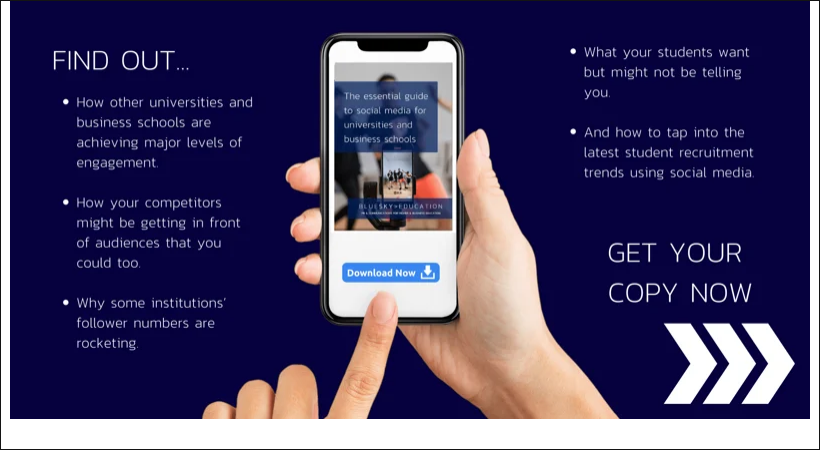Video content has boomed more than ever before, and it’s no surprise! It is an easy-to-digest format that often gives our eyes a break from the overwhelming amount of text we look at all day long.
It is a versatile and engaging form of content, that not only gives us a real-life picture of what’s going on, but it is also very easy to share across multiple platforms – and allows organisations to keep up with ever changing trends.
This is because it allows you to be concise and capture viewers' interest in the first few seconds. Video content gives you the ability to condense information down into easily digestible snippets of content that is long enough to maintain viewers' attention but short enough to leave them wanting more.
We can say with almost certainty that the COVID-19 pandemic has accelerated the use of video content, especially from the introduction of TikTok. We’ve seen institutions and organisations now dedicate more time to creating fun, engaging, and informative video content – which allows them to make a connection to their audience, and drive business.
In fact, the 2024 Hubspot State of Marketing report found that 56% of marketers using TikTok will increase their investment, the highest of any platform.
The report also noted that video is commanding attention and generating ROI more than any other content format. Specifically, short-form video is the number one format, offering the highest ROI and will see the most growth in 2024. A quarter of marketers plan to invest more in short-form video than any other format in 2024. And more than half of marketers who leverage short-form video will increase their investment in 2024.
Marketers are doubling down on TikTok, YouTube, and Instagram to address younger audiences going right to social video platforms to search and engage with brands, rather than to search engines.
Why is video content important?
So, we know that the amount of short-form video content has increased, but why should organisations be using it?
- Firstly, it helps your institution to reach new audiences. Social media often prioritises video content over everything else, the way the algorithms work is that they push video content to more people, who then in turn retweet or share on their profiles – allowing you to reach more people outside of your existing followers.
- It offers the opportunity to tell a story – video can be personal, and allow your audience to get to know you, your institution, and what you do – in the case of higher education, it can showcase to prospective students what campus life is like, and what to expect from their lectures, or even allow them to know who is teaching them!
- It has impressive ROI! Almost everyone has a smartphone these days, and the video quality is impressive, making it easier than ever to create videos (and very cheap too).
- Videos provide great insights – it allows you to keep track of your social media campaigns by checking each video and ensuring that they are, firstly reaching the right target audience, and secondly that they are being engaged with.
Now that we know why you should be using video content, you should focus on what to post.
What kind of videos should you post?
Well, it depends on what you are looking to achieve. Are you wanting more students to sign up to more events on campus? Want more webinar sign-ups? Would you like students to check out a new page on your website? Always tailor your content to what you want your audience to see or learn more about. Here at BlueSky Education, we post blog summary reels, client visits, our visits to conferences all over the globe, webinar clips; the list goes on!
What you need to keep in mind though is the length of them, which depends on the platform you’re posting on. For X, short videos are recommended – usually between 30-40 seconds and a 2 minute maximum; on Instagram you have more leeway with reels, which are usually about a minute long. LinkedIn and Facebook, however, are good for longer-form videos – between one to three minutes at the most.
Here are some examples of what other schools are doing:
Here are some examples on our own socials:
What should we do next?
According to the HubSpot report, Build out your brand’s YouTube presence. This will maximise visibility via video, optimise brand videos with important keywords and create channels and playlists based on your most popular content topics. They also recommend experimenting with AI video tools which can be useful for transforming blog posts into videos with AI video tools like Pictory, or create talking head videos for your brand using AI avatars on Synthesia.
If you’d like to find out more about how we can provide your institution with useful social media tips and advice, why not delve into our e-book on our essential guide to social media for universities and business schools:
With an eye for style and always keeping impact in mind, Megan is dedicated to delivering consistently interesting content that influences audiences, demonstrating growth in both engagement and follower numbers across different key platforms and networks. Beyond creating gripping content, Megan regularly produces key insights into how business schools and universities could, and should, be using social media as a marketing tool.
Originally published October 2021, updated July 2024


.png?width=160&height=200&name=team%20photos%20(13).png)


